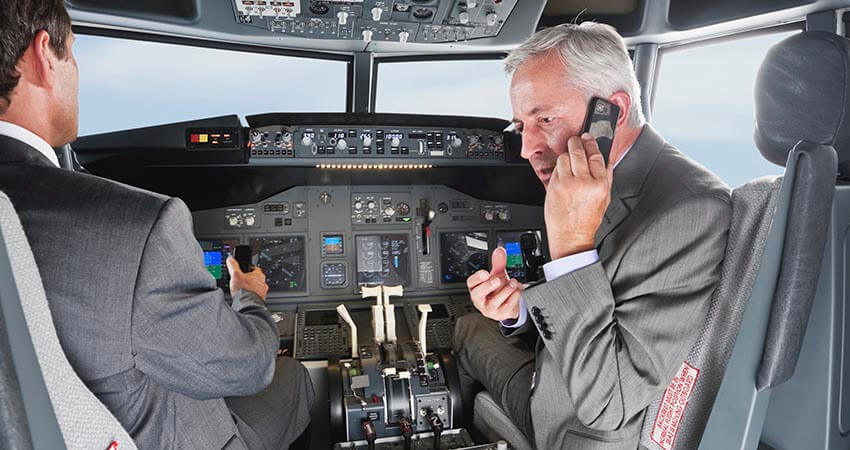Are we becoming too lax with the regulation?
With sterile cockpit procedures in effect for almost 40 years, has the newness worn off on the regulation or are pilots still taking it as seriously as ever? 2017 was declared the safest year in commercial aviation history, but the GA and charter world hasn’t made as much of a positive shift. To help with that end, we are reiterating the rules and regulations accompanying critical phases of flight and providing some examples of scenarios in which to never break your focus.
Critical vs. Non-critical Phases of Flight.
According to 14 CFR 135.100, “a critical phase of flight includes all ground operations involving taxi, takeoff and landing, and all other flight operations conducted below 10,000 feet, except cruise flight.” During these critical phases of flight, it is imperative that you give your full and complete attention to those operations, even ones that may seem mundane or rudimentary. Much like long-distance driving, operations such as taxiing still require extreme attention to detail as accidents can easily happen in these stages. Runway incursions have accounted for roughly over 8,500 accidents since 2013. These accidents could be mitigated with more awareness and cognition in the cockpit.
What would you do?
We have laid out a few situations that we’d like you to sit and ponder. Think about what you would do if this happened while you’re in the cockpit or cabin. It’s important to remember that sterile cockpit procedures are extremely vital for the safety of the flight, and any distractions, even a minor one, can make a huge impairment on the safe landing, takeoff, or taxi of the aircraft.

Another crewmember wants to talk about a rude passenger interaction.
This is unacceptable for a few reasons (like it’s unprofessional to gossip about a passenger, particularly while they are still aboard), unless the passenger is interfering with the current critical operations. Unruly passengers, although fairly uncommon, can affect the outcome of a landing, takeoff, or other critical phase of flight, particularly if they are belligerent or aggressive. This situation should obviously be addressed if it gets to this level, but a passenger making a comment about service or flight experience, no matter how tasteless, is not something to distract yourself with. Simply and quickly give an explanation for the complaint (if necessary), then wait to fully address the situation until you reach cruising altitude or have landed and set the parking brake.
Passenger requests you check his connecting flight as you taxi to parking.
This is an absolute no-go. The risk of a runway incursion is too great for you to be preoccupied with attempting to connect with someone about the status of another flight’s information at that time. Good customer service is a must, but your priority should be safely getting the aircraft parked, wherever that may be. The passenger may be upset or distraught in that moment (especially if there is a late arrival to the destination), but be sure to calmly explain to them why you cannot look right then, but you will as soon as you can. Precise and direct communication with the passenger should curtail any further questions or rebuttal from the passenger (well, at least to your face). Unfortunately, this may not make your passengers happy, but that’s not the priority in that moment.
Finding the balance between safety and customer service can be difficult, particularly when in routine procedures that you think you can distract yourself with. Minor complaints or quick distractions can be the difference between an incursion or safely getting to the hangar. Remember to focus on the procedures at hand and not give in to inflight distractions.
RELATED READING
RELATED CTS TRAINING









